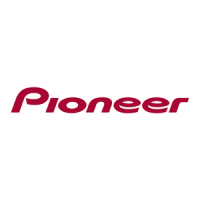Multi-Channel
Stereophonic Philosophy
Audio
Technologies
Video
Technologies
Audio Formats
Sophisticated
Listening Modes
Connectivity Network Features Advanced Control Construction
Advanced Sound Retriever
LX901
LX801
LX701
LX502
The Advanced Sound Retriever restores the output
of compressed audio—such as WMA, AAC, and
MP3—to the level of CD sound. The technology
creates new signals to restore the minor details left out during
the compression process.
Auto Sound Retriever
LX901
LX801
LX701
Since the Advanced Sound Retriever is designed with
an algorithm optimised to process 128 kbps signal, it
did not work well with 8-15 kHz high frequencies in 64
kbps signal, which is the bit rate for quite a few internet stations. The
newly developed Auto Sound Retriever automatically determines the
audio signal’s bit rate, and interpolates the data lost during compression.
It is especially effective for improving the sound quality of low bit rate
content—an ideal feature when switching between internet radio
stations with different bit rates.
Jitterless Transmission for Various Sources
LX901
LX801
LX701
PQLS with HDMI
With the precision quartz controller on the AV receiver, Precision
Quartz Lock System (PQLS) eliminates distortion caused by timing
errors. It controls the amount of audio signals from the AV receiver
to the compatible Blu-ray Disc player, giving the best possible
digital-to-analogue conversion. PQLS Bit-stream is available on the
AV receivers for CD/DVD/BD playback.
For PQLS to be effective, Control with HDMI needs to be on, and
PQLS setting needs to be set to Auto.
PQFA for USB/Network Audio
The previous D/A conversion process used the clock from the input
stage, which generated jitter along the way. With PQFA (Precision
Quartz File-based Audio), the clock is supplied for each stage of input,
digital signal processing, and D/A conversion, and the shorter path
prevents jitter occurrence. Additionally, a high-precision clock IC (OSC)
is used to realise D/A conversion with much less jitter. You can enjoy
USB and network audio sources in higher quality sound.
Time
USB In
Network Module
DSP DAC
DSP DAC
Ultra-High Precision
Clocking Crystal
PQFA System: The ultra-high precision clock crystal has little jitter, and a clock
is supplied for each stage via a short path. This eliminates jitter occurrence,
and PQFA realises clean D/A conversion.
Non PQFA System: The clock crystal originally has a lot of
jitter and the noise affects the circuit, and more jitter occurs
due to long clock path.
Audio signal with jitter
Jitterless signal
AUDIO DATA
AUDIO CLOCK

